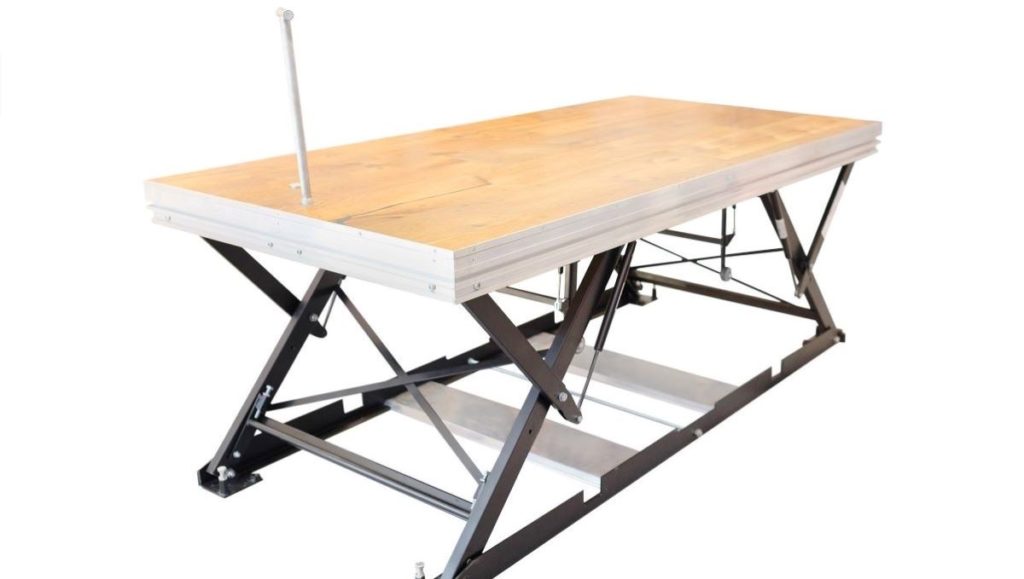Featured image by Vereshchagin Dmitry
Most lift tables come with a ton of built-in safety features. For example, hydraulic lift tables come with solenoid valves that block oil flow, causing the table to stop in case the hydraulic system fails. Also, service locks that keep lift tables in place during servicing are standard.
However, there are safety features that aren’t inherent, features that do not come as part of every pneumatic or hydraulic lift table. These are the safety features that you can request a manufacturer to add on to your lift table in order to create a safer working environment for your employees. Here are some of the top safety features you should consider asking for. Safety features will help you avoid personal injuries at work and potential legal implications for your company.
Add Rails to a Lift Table
You can ask for rails to be added to a lift table. These rails can be as high as necessary to fit your specific needs. You can also ask for them to be extra fortified or to be at whatever angle you like.
These rails will come in handy for keeping products or materials from tilting over or slipping when you are lowering or raising the table. This is especially so in cases when you are dealing with tall loads or loads that have to be stacked on top of each other. As a result, these rails will not only reduce the losses due to accidental damage but will also prevent accidental injuries to your employees
Rails on the lift table can also be used to provide extra support for workers. They can provide a place to hold onto when the table is in motion. Workers can also lean on them when working, allowing the table to serve as an ergonomic tool.
Request Rugged Surfaces
Since lift tables have different uses, standard lift tables do not have rugged surfaces. Some businesses even end up using them as lift-raise working platforms.
However, if you use your lift table to raise loads or position workers, it is imperative that you insist on a grippy surface. This is because the extra grip from a rubberized or ruggedized surface will provide extra friction. This comes in handy in keeping the load in place when the table is in motion.
Employees who use lift tables for positioning will also benefit from the extra friction. It will reduce the chances of slipping. And while workers are always advised to wipe off any moisture or oil spills as soon as they happen, mistakes can happen. In such cases, having a surface that has an extra grip can minimize the risk of accidental injuries.
Customize Lift Tables with Safety Skirts
Safety skirts are a great way to add a splash of style to your facility. This is because when you opt for a good manufacturer, like www.saxlift.com, your customization options are endless. You can choose whichever combination of colors you like. You can also have a say in the eventual shape of the safety skirts.
However, they mainly serve as useful safety features.
The alternating yellow and black folds that most businesses choose are visible to both the people operating the equipment and to other workers. With these colors, it is easy to see when the lift table is in motion, something that helps prevent accidents.
Lift table safety skirts also prevent pieces of materials or even small products from getting into the moving parts of the lift table. This helps reduce the risks of mechanical failure. Furthermore, since the safety skirts can even be reinforced with steel rods, they can also keep the load from getting accidentally crushed.
Workers can also benefit from having safety skirts installed on their lift tables. When used in conjunction with the anti-entrapment bar, safety skirts can become crucial in preventing horrific accidents that happen when workers’ limbs get trapped.
RELATED ARTICLE: USING AND MAINTAINING INDUSTRIAL MACHINERY
Ensure Workers Are Trained
While requesting these additional safety features will help boost employee safety in your facility, they are not enough. These safety features are only effective when the machines are operated by people who are trained to operate them. Therefore, educating your employees on not only how to use the lift table but also what to do in case something goes wrong, is necessary if you want an accident-free work environment.

